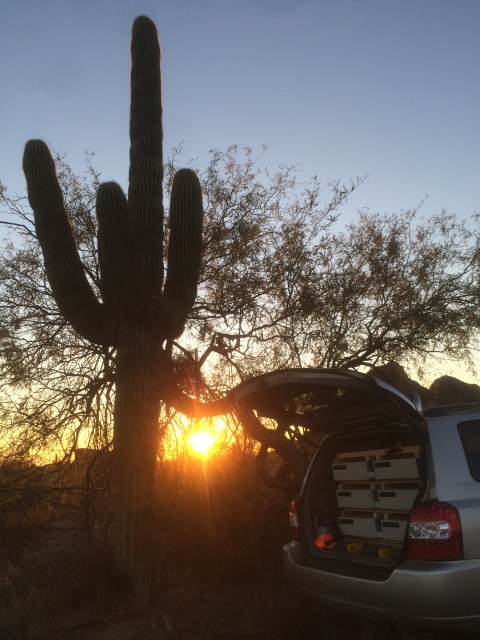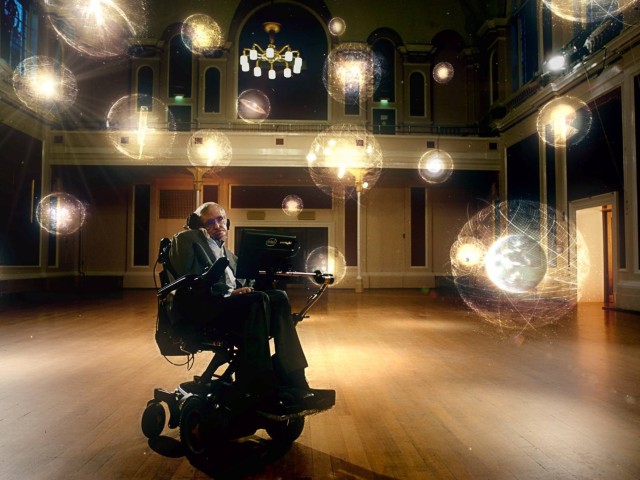
Created 29-Jan-2016
See also: Project GREAT 2005 (Mt Rainier, WA)
and Project GREAT 2005 (photos)
See also: Project GREAT 2016a (Mt Lemmon, AZ)
and Project GREAT 2016a (photos) [current page]
A PBS publicity photo for GENIUS by Stephen Hawking
(Episode 1):

I took over the dining room table to test a bunch of 5071A cesium clocks for a week:
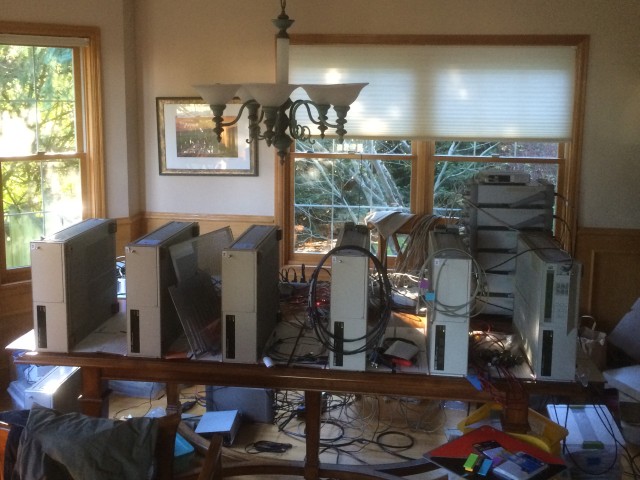
They were continuously inter- and intra-compared with sub-nanosecond time interval counters:
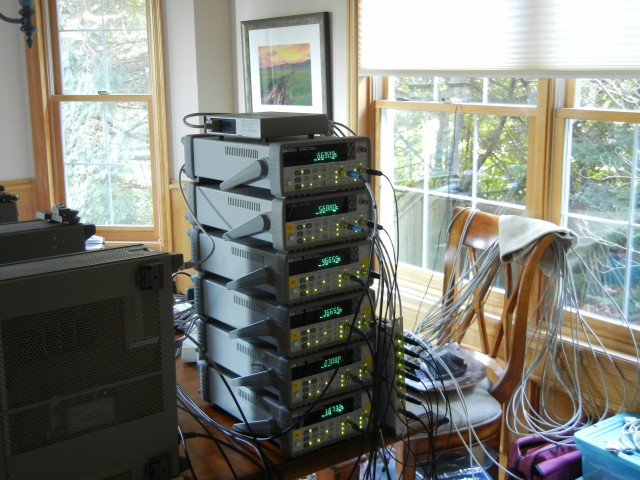
After a week of thorough measurement their accuracy and stability is known with good confidence:
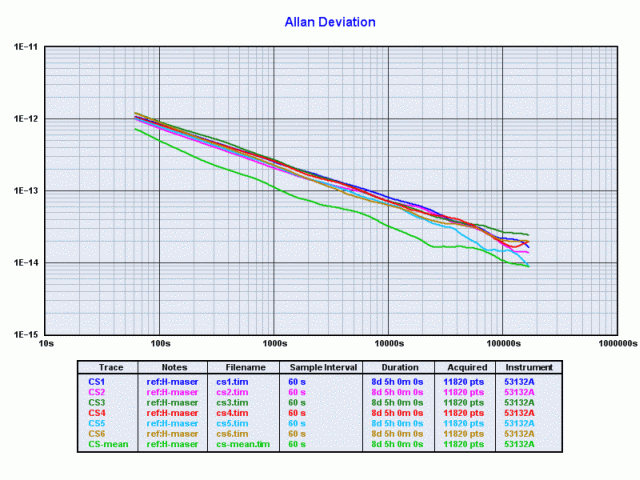
Nothing is perfect, but these clocks can keep time to within a few nanoseconds per day:
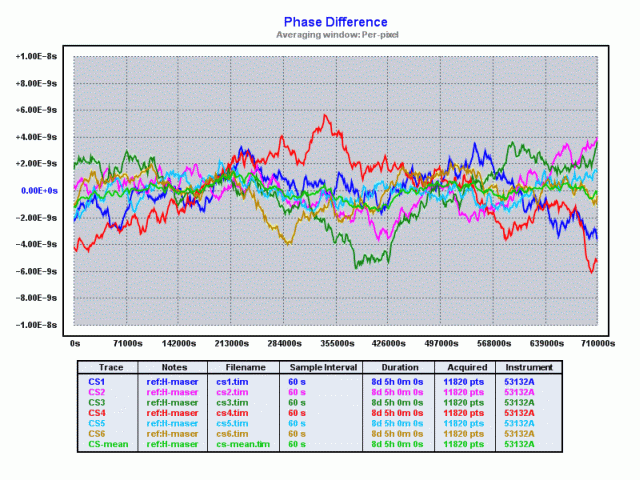
With some effort they all fit nicely in the back of the car, and stayed running:
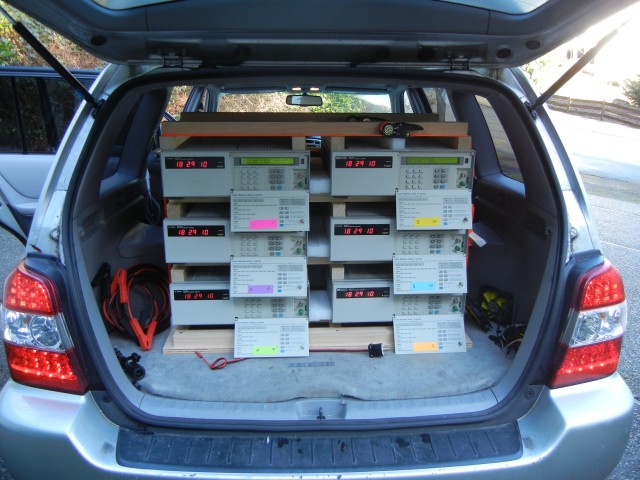
Unexpected winter storm in Oregon, but AWD and 1200 pounds of clocks and batteries gives superb traction:
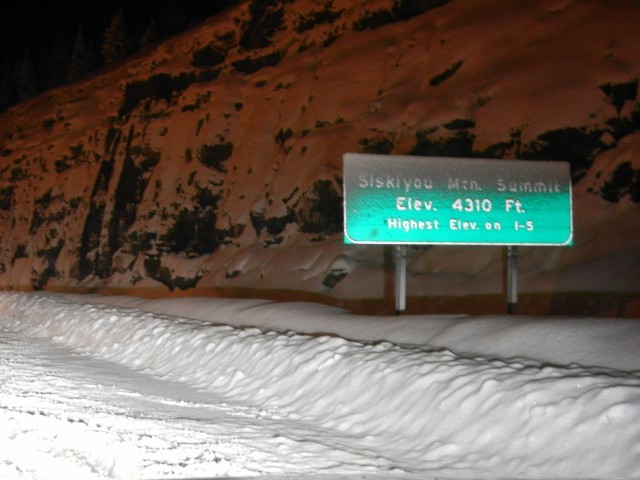
Somewhere scenic along the two-day road trip from Washington to Arizona:
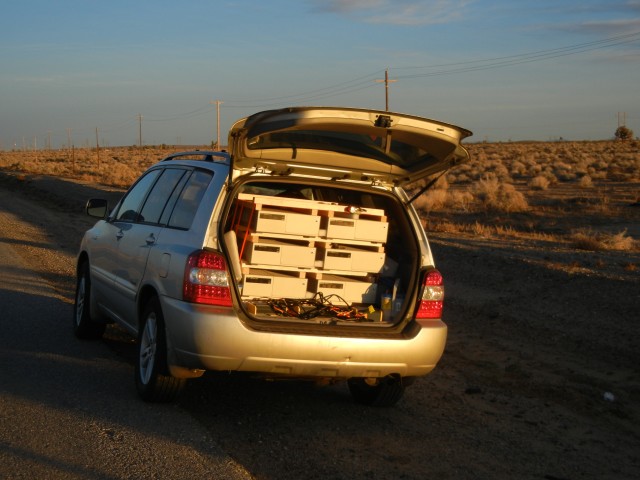
Somewhere in California not as scenic:

To an engineer the power lines are as interesting as the patterns of the hills:

I arrived at the 9100 foot summit of Mt Lemmon, near Tucson, Arizona:
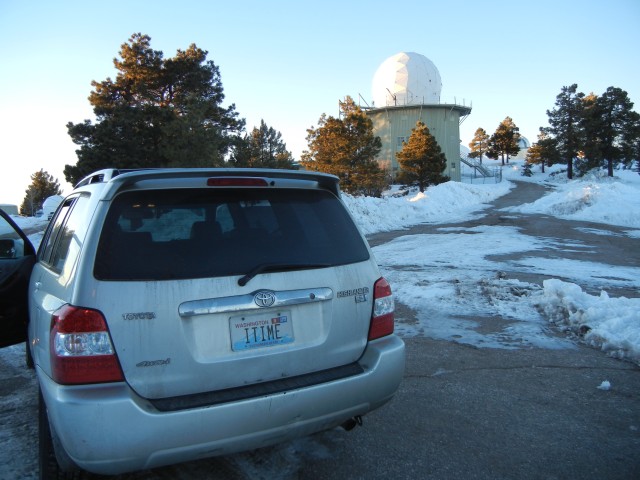
And carefully unloaded half the clocks, still running:
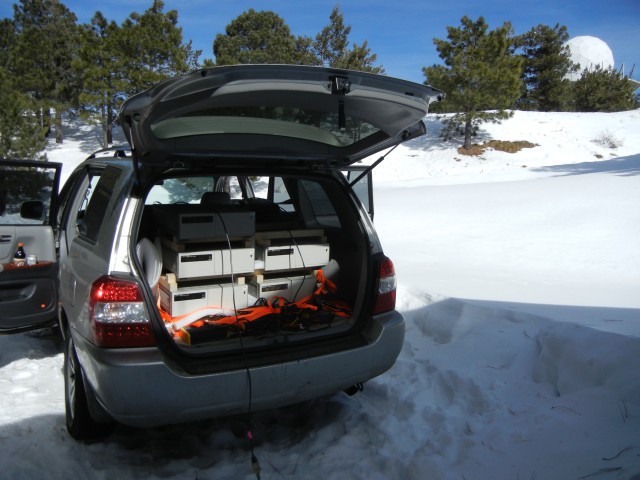
While 3 clocks went back down to the hotel, these 3 stayed up in the astronomer's dormitory:
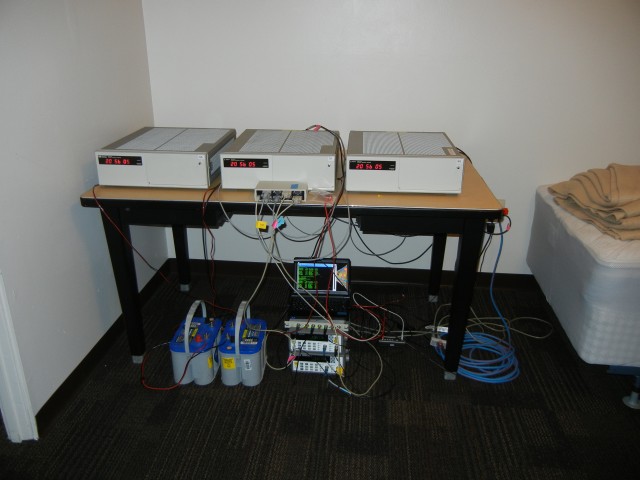
Astronomer's dormitory for CS1 CS3 CS5 at the summit:
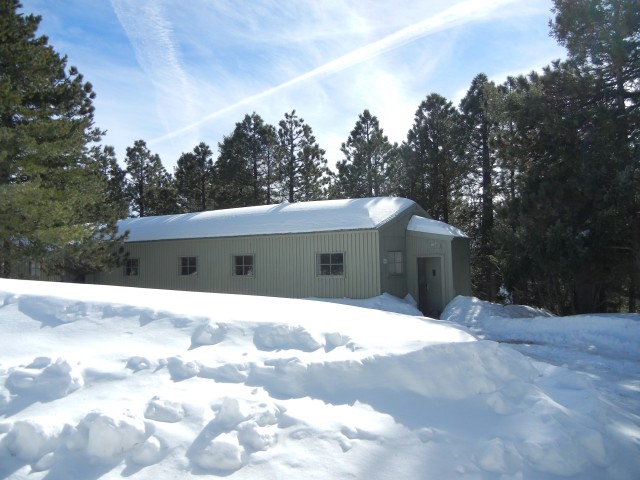
Reserved parking spot (and AC power) for CS2 CS4 CS6 at the hotel:
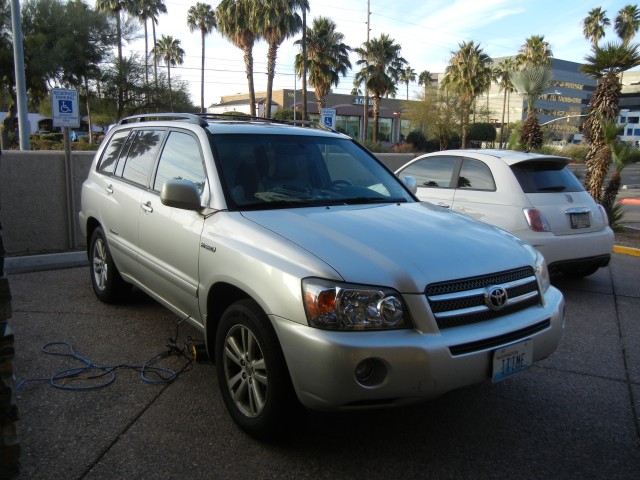
Inside the car are the intra-counters for CS2 CS4 CS6 (view of backup batteries also):
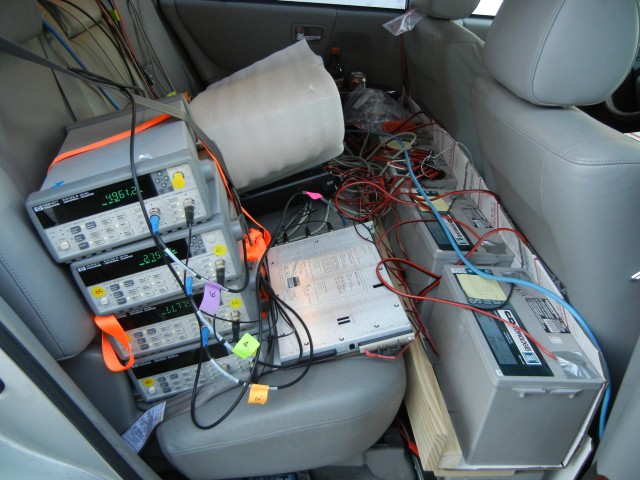
About 24 hours later, we transferred a pair of low-altitude and high-altitude clocks to the observatory:

Carrying 70 pounds of clock and 50 pounds of battery power; repeat twice:
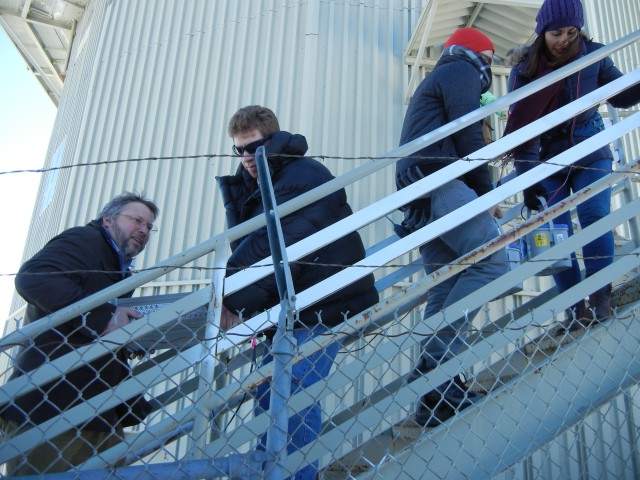
Comparing clocks (20.502 nanoseconds) to see if Einstein was right about gravitational time dilation:
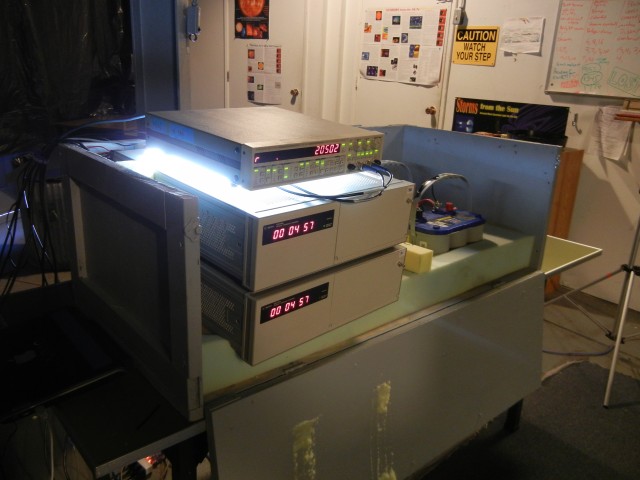
The three volunteers in the TV show pose in front of the clock comparison:

Preliminary clock comparison, 10 ns scale, showing roughly 20 ns of time dilation:
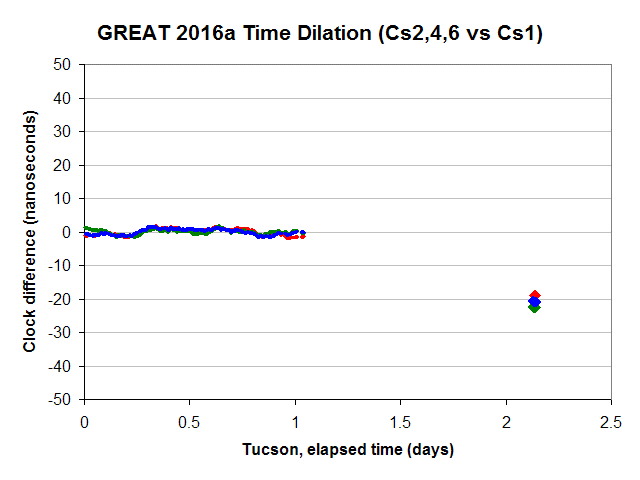
Preliminary clock comparison, 1 ns scale, meeting both signal and noise expectations:
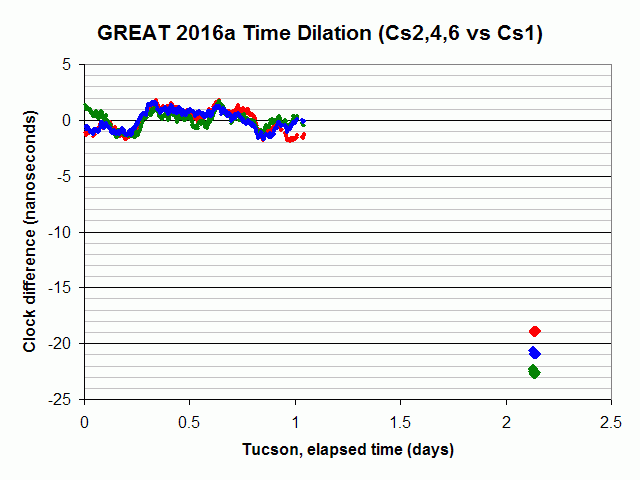
Elevation profile, 500 m scale, via GPS tracking:
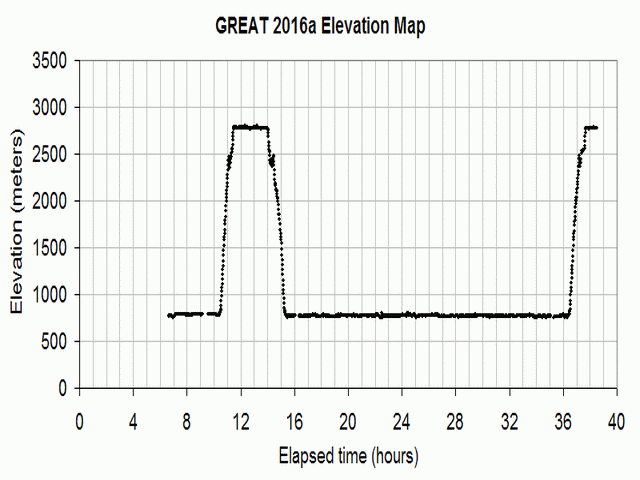
Elevation profile, 25 m scale, showing hotel clocks at 775 m:
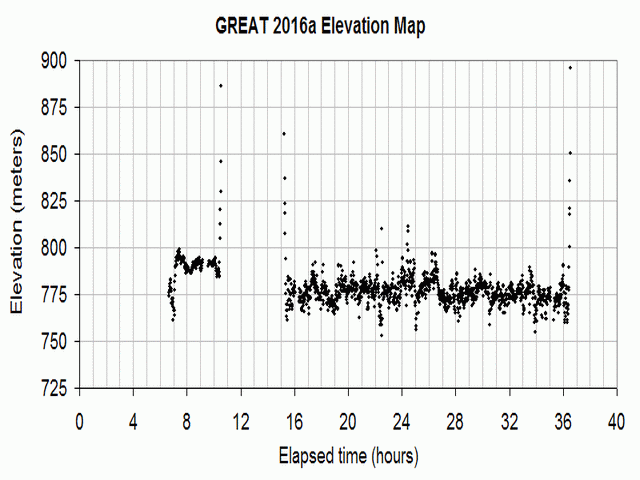
Elevation profile, 25 m scale, showing summit clocks at 2780 m:

Helpful UofA astronomer, Steward Observatory, Skycenter site manager, Adam Block:

Helpful UK production crew, Freya.W and Faran.I:
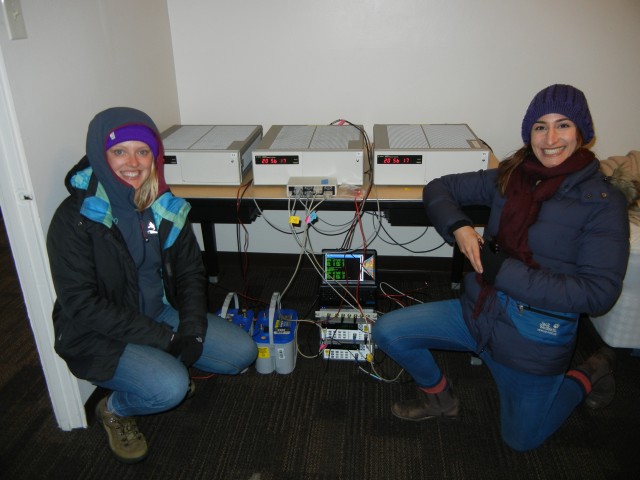
The three time traveling volunteers Paul, Norm, Marisol:
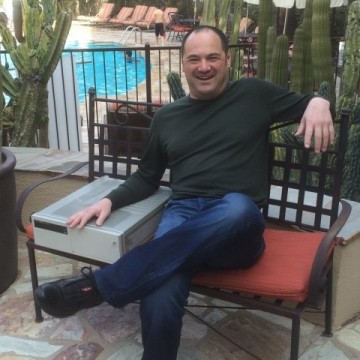
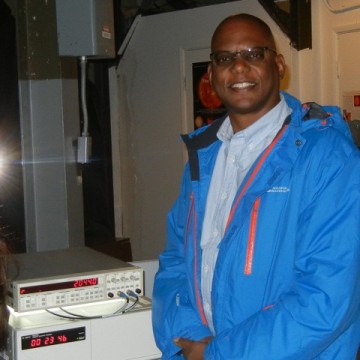
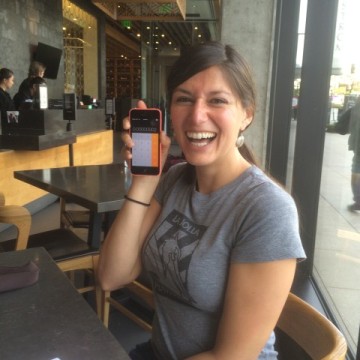
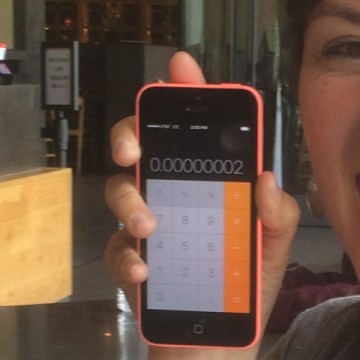
Yes, you too can calculate time dilation:
23 × 3600
×
9.8 × 2000
÷ 300 000 000
÷ 300 000 000
= 0.000 000 02 seconds (18 ns).
Next morning it was time to clean up the mess and leave the hotel:
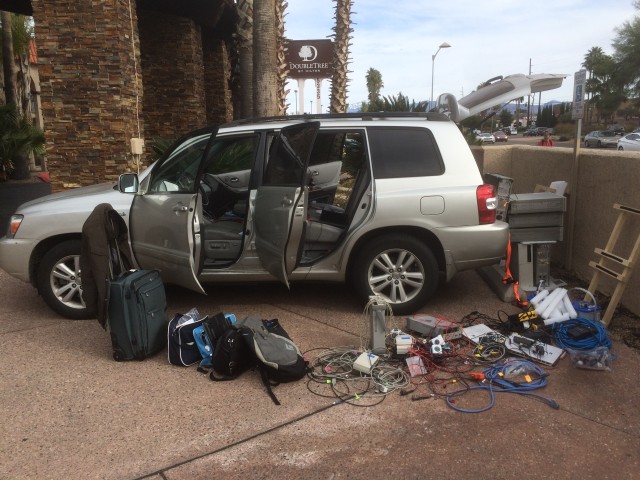
A photo of a 5071A in its new environment:
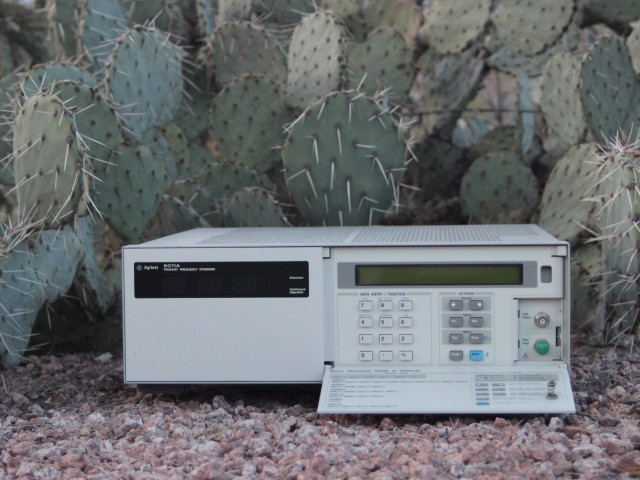
Passing through Monterey, CA for the annual PTTI (Precise Time and Time Interval) conference; photo courtesy of Hugo Fruehauf:
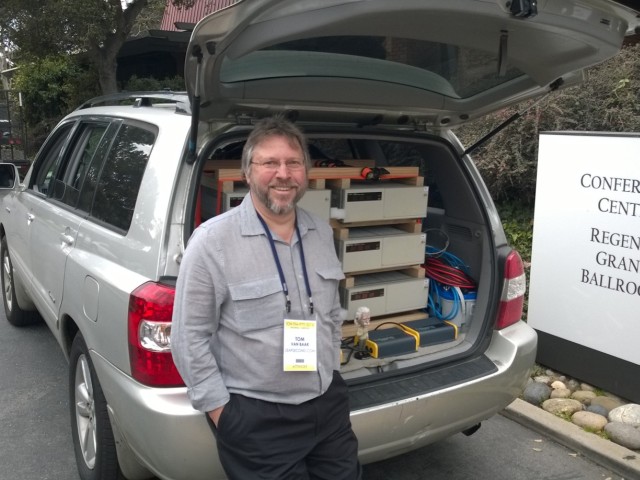
A relatively good time was had by all; good memories of Arizona and an interesting Stephen Hawking production.
